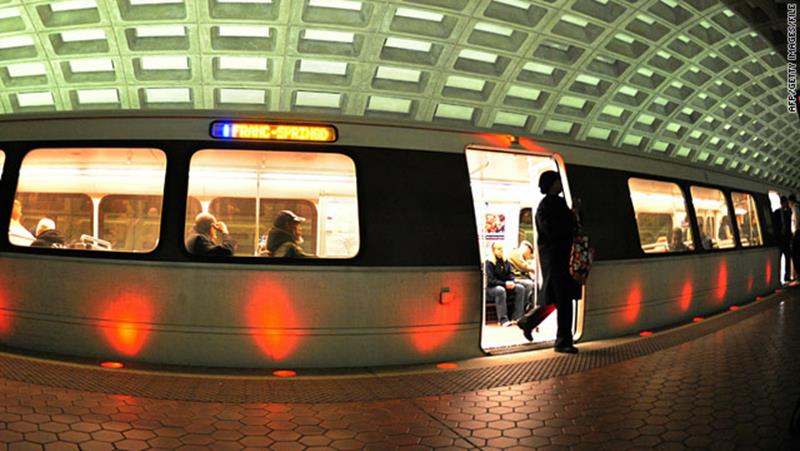Metro 2025 Means Business – Lots of it…
Without Metro 2025, the region might give up more jobs than the current size of 80 of the nation’s 100 largest downtowns.


One way to alleviate congestion – limit transit funding and stymie job growth!
The Washington, D.C. region earned in 2012 the unfortunate honor of being named the #1 region in the nation – for congestion. For the workers in this region this comes as no surprise, as seemingly endless “volume delays” litter our evening traffic reports, commuters spend more than a full week and a half sitting in traffic each year, and even the public transit network – primarily Metrorail – is so crowded that commuters often have to wait for multiple trains just to squeeze onto the system. And unless proposed transportation investments keep up with projected household and job growth – MWCOG projects that the region will add 1.6 million jobs by 2040 – these commutes are only going to become more painful.
We all know that the high price of congestion is in the billions of dollars per year, a figure that would be even higher but not for transit’s impact has in reducing the region’s congestion by 10 to 15 percent, saving commuters time and money stuck in traffic, and preventing the need to build hundreds of thousands of new parking spaces and 1,000 additional lane miles of roads.
But that price pales in comparison to what may be if we don’t act now to make meaningful improvements to the regions congestion-reducing transportation infrastructure, especially in programs like Metro 2025. Turns out that we now know that when regions exceed 35 to 37 hours of delay per commuter per year – about four and a half minutes per one way free flow trip – regional job growth begins to slow. That means that expectations of continued economic growth in the region are a lot less rosy when we consider that we currently run about 72 hours of delay per commuter per year – and rising. And before you dismiss this as planning theory, remember that Hewlett Packard showed Atlanta and the nation in 1998 that congestion’s negative impact on employment growth can be economic fact.
That brings us to Metro’s much needed plan to add capacity to the existing transit network and combat congestion. Metro 2025 investments including all eight-car trains, core station improvements, and the Metrobus Priority Corridor Network will collectively remove 135,000 cars from the regional roadways, saving about 25 million person hours per year in congestion. Without these investments, these cars join the regional road network and make congestion worse. Based on the cutting-edge research mentioned above, adding these cars to the road slows regional economic growth rate by as much as one-third.
Over the next thirty years, then, the cost of saying “no” to Metro 2025 and other congestion-reducing investments means saying “no” to approximately 133,000 jobs. That’s more jobs than in 80 of the nation’s 100 largest downtowns. Put another way, if all of those jobs were office jobs, that would be the equivalent of 20M square feet of office space, which if valued conservatively at $500/SF, translates into $10B in real property value.
Since the return on investment in Metro 2025 is over one hundred thousand jobs, billions of dollars in catalyzed asset value, shorter commutes, cleaner air, and a higher quality of life, we at Metro are committed to complete the rebuilding process and prepare the system to continue to support this region’s prosperity for decades to come.


This is a growing problem not only for DC, but many other metro regions as well, including San Francisco, where I live.
I find it sad that officials are pushing for 2030, 2040 and even 2050 (hello BART!) transit plans, when current systems are not only maxed out, but starting to show their wear and tear after years in service.
Fault doesn’t just lie with the transit agencies, however. City and county officials need to target smart growth around existing transit stations, especially in the suburbs, to contain sprawl and create density. Unfortunately, that’s not in the cards in the Bay Area as BART continues to push deeper into exurbia with more commuter park/ride monsters while developers fixate on subdivisions and strip malls. The inner cores also need a transit boost as more people are moving back into cities and companies relocate or expand to city centers. I’m hoping the Blue Line separation is fast tracked and running within 10 years. WMATA can do it and knows it has to be done. SF needs a rail system connecting the west side of town to the rest of the world, be it MUNI or BART, not a Central Subway boondoggle that will do absolutely nothing to make commuting better in the city. Currently, it takes 45 minutes on the express bus to go from the ocean to downtown. The local bus? Let’s just say it wouldn’t be wise to be in any hurry.
Politics, corruption, red tape and NIMBYism are contributing factors to poor (or no) transit planning, but tell that to the thousands of people stuck in traffic on the Beltway or I-80. Perhaps transit advocates and smart growth developers can provide informative PSAs for drivers to listen to as they sit on the congested roadways day after day. Why not start a grassroots movement.